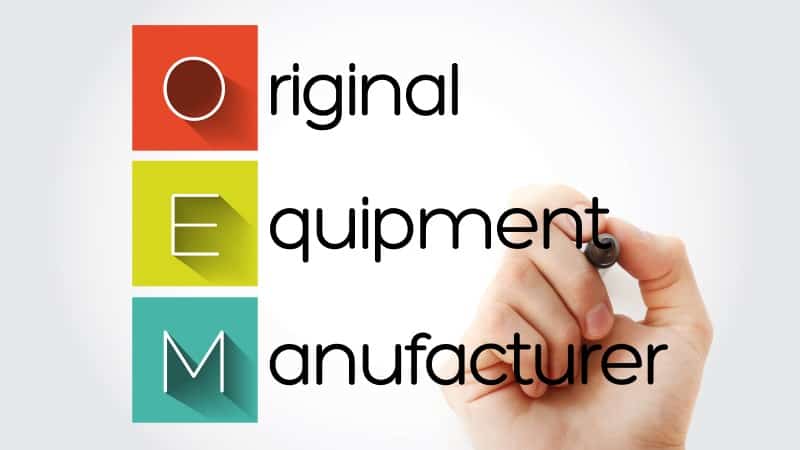Decoding OEM: Unraveling the Mystery Behind the Acronym
When it comes to the world of manufacturing and technology, the term “OEM” often pops up. OEM stands for Original Equipment Manufacturer and plays a significant role in various industries. In this article, we will delve into the concept of OEM, employing the MECE (Mutually Exclusive, Collectively Exhaustive) Framework to provide a comprehensive understanding of its implications and significance.

Understanding OEM
What Does OEM Stand For?
OEM stands for Original Equipment Manufacturer. It refers to a company that produces components or products that are used in the manufacturing of another company’s end product. The term “equipment” refers to the physical or digital parts, devices, or software that are integrated into the final product by the OEM.
The Role of OEM in Different Industries
OEM is prevalent in various industries, including automotive, electronics, software, and more. In these sectors, OEM ensures that the products manufactured by different companies meet the required quality, reliability, and compatibility standards. OEM plays a crucial role in maintaining consistency and standardization within the industry.
OEM vs. Aftermarket: Key Differences
OEM products are different from aftermarket products. OEM components are produced by the original manufacturer of the end product, ensuring a high level of quality, compatibility, and warranty. Aftermarket products, on the other hand, are produced by third-party manufacturers and may not meet the same quality standards as OEM products. While aftermarket products may be cheaper, they often lack the same level of reliability and compatibility as OEM products.
OEM in Practice
OEM in the Automotive Industry
In the automotive industry, OEM components are seamlessly integrated into vehicles during the manufacturing process. These components, such as engines, transmissions, and electronic systems, are specifically designed and manufactured by the original vehicle manufacturer. Using OEM parts in vehicles ensures optimal performance, warranty coverage, and safety. OEM parts are built to the exact specifications of the vehicle, providing a perfect fit and maintaining the integrity of the vehicle’s design.
OEM in the Electronics Industry
The electronics industry heavily relies on OEM components to create various devices. OEM electronics, such as integrated circuits, displays, and sensors, are designed and produced by the original manufacturer. These components are known for their compatibility with the devices they are intended for, ensuring reliable performance and seamless integration. Using OEM electronics in devices enhances their functionality and reliability, as they are specifically engineered to work harmoniously with the overall system.
OEM in the Software Industry
In the software industry, OEM software refers to software packages that are licensed by original manufacturers to be bundled with other products or services. OEM software is often pre-installed on computers, smartphones, or other electronic devices. It provides users with a legitimate and authorized version of the software, along with regular updates and technical support. OEM software is an integral part of the overall user experience, offering enhanced functionality and compatibility.
FAQs:
What are the advantages of choosing OEM products?
Choosing OEM products comes with several advantages. OEM products are known for their high quality, as they are produced by the original manufacturer and designed to meet specific standards. They offer compatibility with the intended system, ensuring seamless integration and optimal performance. Additionally, OEM products often come with warranties, providing peace of mind to consumers.
Are OEM products more expensive than aftermarket alternatives?
OEM products may be slightly more expensive than aftermarket alternatives due to their higher quality and compatibility. However, it is important to consider the long-term benefits of choosing OEM, such as better performance and reliability. The cost difference is often justified by the enhanced user experience and reduced risk of compatibility issues.
Can OEM parts be used to upgrade existing products?
Yes, OEM parts can be used to upgrade existing products in many cases. OEM manufacturers often provide compatible upgrade options for their products, allowing users to enhance the performance or functionality of their devices. Whether it’s upgrading a vehicle with OEM performance parts or upgrading a computer with OEM components, using OEM parts ensures compatibility and maintains the integrity of the original product design. However, it’s important to check the compatibility and specifications provided by the OEM to ensure a successful upgrade.
How can consumers identify OEM products?
Identifying genuine OEM products can be crucial to ensure quality and compatibility. Here are a few tips:
Check the packaging and labels for the OEM branding and logos.
Look for authorized OEM retailers or purchase directly from the OEM’s official website.
Read product descriptions and specifications to ensure they match the OEM’s official information.
Verify the warranty and support provided, as OEM products usually come with manufacturer-backed warranties.
Is OEM limited to physical products, or does it extend to services as well?
While OEM is commonly associated with physical products, it can also extend to services. In service-oriented industries, OEM refers to companies that provide specialized services or solutions to other businesses. These OEM service providers offer expertise, resources, and support to help other companies enhance their operations or deliver specific services. For example, in the IT industry, OEM service providers may offer white-label services or customized solutions that can be resold by other businesses under their brand.
Conclusion:
OEM, or Original Equipment Manufacturer, is a fundamental concept in various industries. Understanding OEM helps us recognize the importance of quality, compatibility, and standardization in the products and services we use. Whether it’s automotive, electronics, software, or other sectors, OEM plays a crucial role in ensuring optimal performance, reliability, and customer satisfaction. By choosing OEM products, consumers can enjoy the benefits of high-quality components and seamless integration, ultimately enhancing their overall experience. So, the next time you make a purchasing decision, consider the value that OEM brings to the table.

